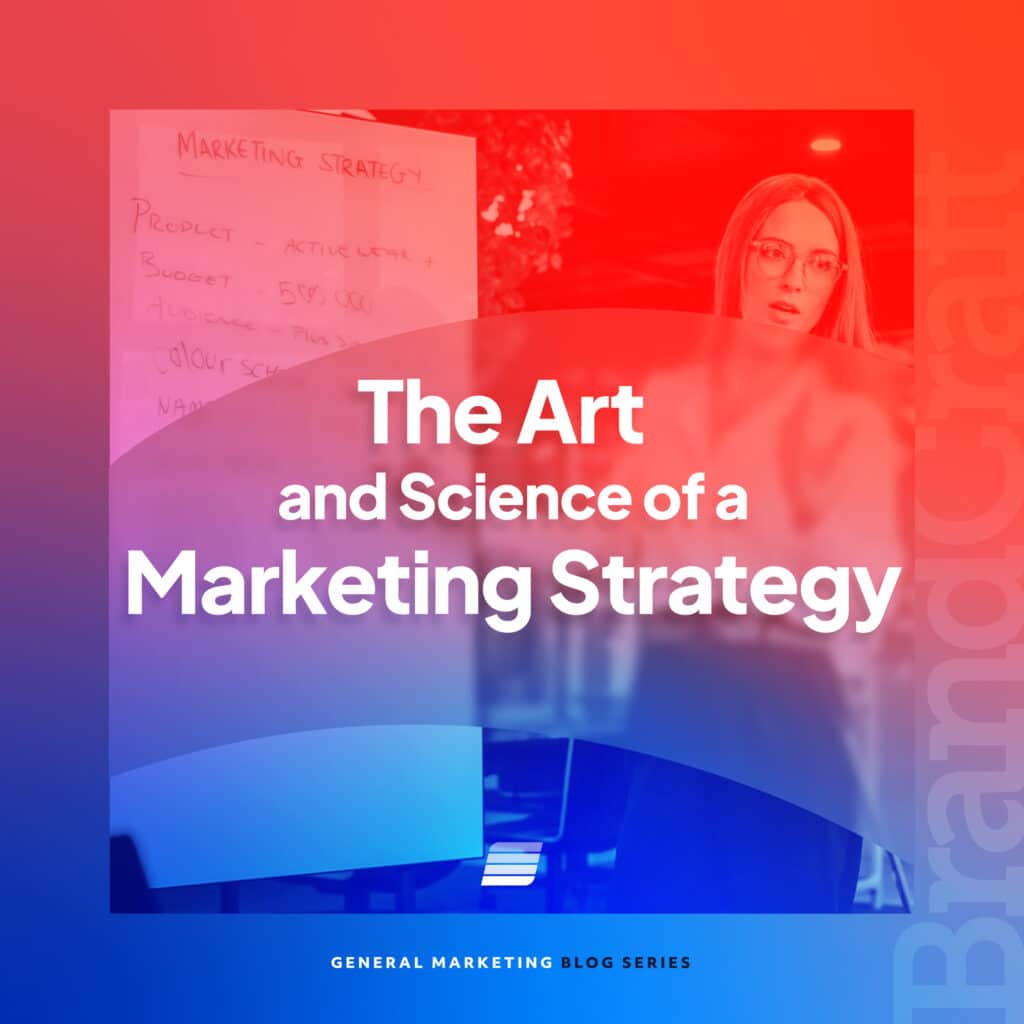How to Prepare Your SEO Strategy for Next Year According to an SEO Consultant
December 23, 2021

If you’re running your own website, you likely have learned about the importance of SEO, and a little bit about how to do it. However, executing on what you know needs to be done can be a challenge, especially when SEO includes such a broad range of tasks. At the end of this year you may be thinking, “I will tackle my SEO in the new year.” That is a great goal! But in the immortal words of Benjamin Franklin, “If you fail to plan, you are planning to fail.”
To that end, this guide will help you plan your SEO strategy for next year, using the same method that our SEO consultant uses.
Check Your Analytics
Before you can plan for next year, you need to know where you stand right now, at the end of the year. Make a list of the important metrics, or key performance indicators (KPI’s) that are important to you. For example, here at BrandCraft, we use these metrics for our KPI’s:
- From your favorite SEO Tool:
- Search visibility
- SERP Features
- Feature Snippets
- Domain Authority
- Keywords in the top 10 search results
- Total crawl issues
- From your Google Analytics
- Total Organic Traffic (Acquisition > All Traffic > Channels)
- Total goal completions
- Organic Bounce rate
- From your Google My Business listing (Under “Insights” in the menu on the left)
- Profile views
- Phone calls from Google My Business
- Directions Requests
- Website Visits
- Messages (if it is set up).
We recommend averaging your yearly totals for each month. This will give you an idea of how your site performed on average throughout the year.
Once you have found all your benchmark values, set some goals for the following year. These can be whatever you want, but a good place to start is a monthly average increase of 10% across the board (except for bounce rate – you generally want this number to go down) but adjust based on your knowledge of your business. Keep your goals in a place that you will see often, so that you can keep track of your efforts to achieve those goals (this has helped me as a successful SEO consultant).
Keyword Research
The next part of your SEO planning is keyword research. If this is your first time doing keyword research, there are a lot of tools that can simplify and speed up the process. If you completed keyword research for this year, then start there. Check how your current tracked keywords are performing. Are there any that are underperforming? Are there any that lead to a page on your site you don’t want them to lead to?
If you have any underperforming keywords or keywords that lead to the wrong page, keep these keywords in your tracked keyword list. For any keyword that you are consistently ranking well for, and ranking the right pages, you can remove them from your keyword tracking tool. This is helpful if you have a lot of tracked keywords, but a limit on how many keywords you can track. If you aren’t going to run into any limits, feel free to leave this year’s keyword list intact.
As an SEO consultant, one of the first places I start my research is in Google Search Console, inside the “Search Results” report. Sort by impressions from high to low and add “Average Position” to the report. Use this report to see which keywords have a search volume, but for which you either don’t rank well for, or don’t get many clicks for, or both.

Once you’ve found the keywords of value from Search Console, it’s to move to an actual keyword research tool. There are many tools you can use, but at a minimum, you want a tool that will show you your current ranking inside your geographic area, as well as the search volume for that geographic area. Ideally, you want keywords that you don’t rank well for, but that have a high search volume.
Once you have your list of target keywords, decide whether each target keyword should be used to create new content, or if it coincides with a page that you want to rank better. Once you have made these distinctions, you can move forward.
Content Calendar
Once you have a list of target keywords for which you are planning to create new content around, it’s time to create your content calendar. We recommend that you post no less than once per month but do what makes sense for you and your business.
Start your plan by deciding which keyword(s) you will target each month. For each keyword, decide which topic will best incorporate that keyword and answer searchers’ questions. Content types that tend to rank well include how-to’s, lists (top 10s tend to perform very well), and FAQs.
Technical SEO
Technical SEO is a broad topic, that many have a profession out of. For our purposes, we will focus on what we can find using a tool to find technical issues. Common tools for this include SEM Rush, Moz, Ahrefs, Ubersuggest, etc. These tools all work more or less the same – they will crawl you site and look for any technical issues, and then report back to you what they find and where they found it. Common issues include:
- Missing metadata
- Metadata that is too short or too long
- Images that are too big
- Code files that are too big/unused
- Slow page speed
- Broken links
- 404 errors
- Missing sitemap
- Caching issues
- Etc.
These tools find tons of issues, and no one has a perfect site, so don’t be surprised if one of these tools finds more than you thought they would. The point is to know what is wrong, and then to fix it. In most cases, fixes are simple. In other cases, you may want to find an SEO consultant who is well versed in technical SEO issues and knows how to fix them.
Schema markup is another part of technical SEO that you should monitor. There are several services that help to create/automate schema markup, but at a minimum, you should make sure that you have schema set up for your local business, people on your site, reviews, contact information, services, and/or products. Schema is Google’s native language, so giving your content to Google in a format it understands explicitly will help Google understand who to serve your content to.
Backlinks
If you own a site, chances are you’ve received several spam emails or form submissions from someone who wants to sell you backlinks. As a rule, purchased backlinks are more likely to hurt your SEO than help it. Google wants you have backlinks, but it wants you to earn those backlinks. To that end, you should plan to spend some time doing at least the following:
- Find a sites that you can guest post on, and who will give you a backlink.
- Try to find websites that are in the same industry or niche as your businesses, as Google frowns upon backlinks from sites that are irrelevant to your business type (it views these as link farms, and these can hurt your SEO performance).
- Find sites that already mention your business, but do not have a link to your site.
- Reach out to the owners of these sites directly and ask for a link. New sites and listing sites are common sites that list or mention a business without linking back to them
- Using a tool like Google Alerts can help you stay on top of this
- Write great, shareable, linkable content
- Use your content calendar to create content that people want to link to. Share your content when you publish it and use tools like Help a Reporter Out (HARO) to push your knowledge and expertise out into the world. In most cases, these opportunities assume that they are giving you a backlink.
Another part of backlinks is monitoring your existing backlinks for toxicity. Toxic backlinks do more harm than not having them in the first place. If you find them, the best way to take care of them is to have the site owner remove them. Failing that, you can disavow those links so that Google doesn’t associate your site with those links an penalize you for them.
Off-Page SEO
Off-page SEO consists mainly of local SEO efforts, with the biggest focus being on your Google Business Profile (formerly Google My Business) and similar listings. As an SEO consultant, having an up-to-date and completed Google Business Profile will help your listing show up in search results, especially for non-branded searches. Plan to make sure you profile has all the correct information as soon as possible.
Once your contact information is up to date, you will want to plan to completely fill out the profile. This includes adding all your links, business description, photos, amenities, services, and products. We also recommend turning on call tracking and messaging.
Once you have your Google Business Profile filled out and optimized, start planning your posts. There 4 main post types you can use:
- What’s New
- Offer
- Event
- Product
These post types allow you to post updates (like new blog posts), timed deals, events, and product updates. You should plan to post at least once a month.
After you have you are done with Google, check to make sure that your Name, Address, and Phone number are correct across other listing sites. There are many tools that find this information for you. For any sites that list wrong or incomplete information for your business, claim and update your business information. There are many software services that do this for you as well, but it can be done manually.
Conclusion
Like many elements of digital marketing, SEO can be overwhelming. Having a plan for the year can help you achieve your SEO goals and move you closer to search engine dominance. If you find that you need help creating an SEO plan or executing your SEO plan, our resident SEO consultant would love to help!
Give us a call or shoot us a message to see how we can help you take your business to the next level.







